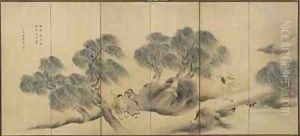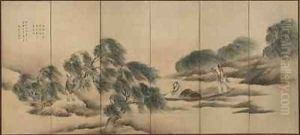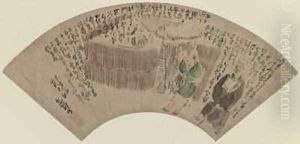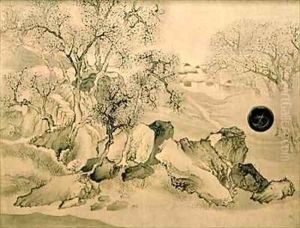Yosa (T.Y. Shinsho) Buson Paintings
Yosa Buson, also known as Yosa no Buson or Taniguchi Buson, was a Japanese poet and painter of the Edo period. He is widely recognized for his contributions to the development of the haiku form of poetry and is considered one of the great masters of this art, alongside Matsuo Bashō and Kobayashi Issa. Buson was born in 1716 in the village of Kema in Settsu Province (now part of the city of Osaka). He later moved to Edo (modern-day Tokyo) to study haiku under the tutelage of the renowned haiku master Hayano Hajin.
After Hajin's death, Buson traveled extensively throughout Japan, which influenced both his poetry and his artwork. He eventually settled in the city of Kyoto, where he would spend the majority of his life. Buson's travels are reflected in his poems, which often express a deep appreciation of nature and the changing seasons. His style is characterized by its vivid imagery and a sense of directness and simplicity.
As a painter, Buson is considered one of the greatest masters of the bunjinga (literati painting) style, which emphasized personal expression and technical virtuosity. His works often combine traditional Chinese painting techniques with Japanese elements and often depict landscapes, flora, and fauna. Buson's artistic talents extend to the calligraphy in which he wrote his poems, and many of his haiku are preserved in his own hand, providing a visual complement to the lyrical imagery of his poetry.
During his lifetime, Buson was an influential figure in the cultural circles of Kyoto, and he taught several disciples who would carry on his artistic and poetic traditions. Despite his critical acclaim as a painter, it was not until after his death in 1784 that Buson's poetry received wider recognition. Today, Buson is revered not only for his significant contributions to Japanese literature and haiku but also for his impact on Japanese painting. His works continue to be celebrated for their beauty and depth, offering insight into the world of Edo-period Japan and the aesthetics of its literati culture.



